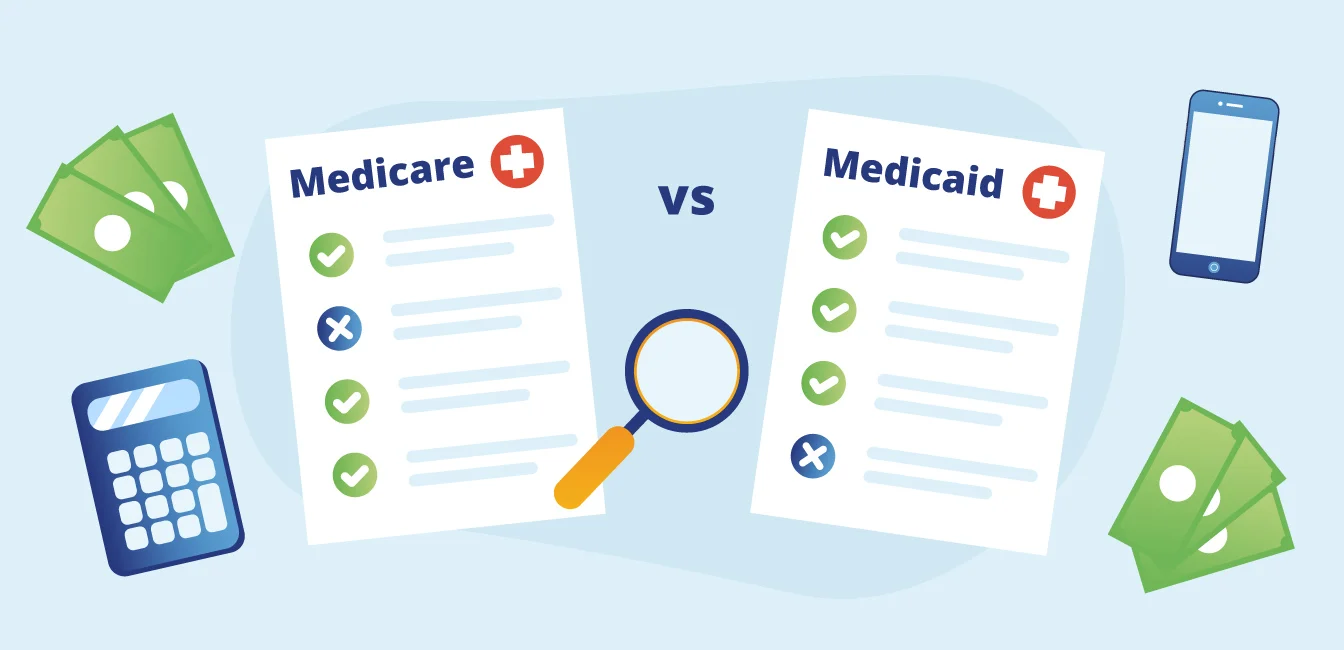
Medicare plans may vary by year. They appear to be similar but both programs are really different. All programs are usually created for different populations of people. Nevertheless, the program offers a choice of two options. In order to choose one that best meets your needs, the Medicare/Medicaid program needs to explain its differences.
The Medicaid and Medicare programs offer the same medical coverage through government programs. Medicare is essentially available to older adults and those with disabilities while Medicaid serves low income people. Certain people can be eligible either way. There's a difference between Medicare and Medicaid.
Medicaments is essentially a synonym for medical assistance. They help people to make a living by providing health services to others. And there are similarities. See here for details and comparisons of different programs.
Medicare is generally aimed at those 65 or over who have qualifying disabilities and have medical conditions. Part C and Part D are administered by the federal government but Medicare Part D is administered in private insurance plans under private insurance. Medicaid is a federal program that helps people with fewer resources manage their health care expenses. Various programs are available in particular populations.
Medicaid plans differ from state-to-state but have federally approved requirements for benefits. Medicare Advantage plans are offered through private insurance companies. Many of these plans cover services like prescription drug coverage , dental , vision , and hearing care that aren't included in original Medicare.
Part A Medicare Part B Medicare is a healthcare program. Part C (Medicare Advantage / Medicare Part C / Part D / Medicare Part A & Part B Part B and Part B Medicare coverage are standard, however Part C can vary depending on the amount of coverage offered based upon a policy, the insurer or the location. Dual eligibility If you have Medicare and full Medicaid coverage, most of your health care costs are likely covered. Learn about our editorial process Medicare and Medicaid both provide healthcare coverage via government programs, but they have some important differences. Essentially, Medicare is for people who are over age 65 or have a disability, while Medicaid is for people with low incomes. Some people are eligible for both.
Medicaid programs have federally funded or voluntary funded services as a part of a plan. Different states determine the optional benefit. Many of these plans cover services like prescription drug coverage , dental , vision , and hearing care that aren't included in original Medicare. In this case, you may have original Medicare (parts A and B) or a Medicare Advantage plan (Part C), and Medicare will cover your prescription drugs under Part D. Medicaid may also cover other care and drugs that Medicare doesn't, so having both will probably cover most of your healthcare costs.
Medicare's tax revenues are repaid by the government through the Medicare trust fund. Medicare beneficiaries' medical bills are paid out of this fund. Medicaid covers the average 45% of all Medicaid costs. The percentage of the state is based on the median household income of the citizens. And, you'll automatically qualify for Extra Help A Medicare program to help people with limited income and resources pay Medicare prescription drug program costs, like premiums, deductibles, and coinsurance.
The federal government is also being obligated by the ACA to pay more for expansions on Medicaid. It is basically the same everywhere in the United States and is run by the Centers for Medicare & Medicaid Services, an agency of the federal government. There are two main branches of Medicare to choose from — original Medicare and Medicare Advantage.
Original Medicare Original Medicare is a government-funded medical insurance option that many older Americans use Medicare as their primary insurance. The Boards of Trustees, Federal Hospital Insurance and Federal Supplementary Medical Insurance Trust Funds.
Senior and disabled individuals have Medicare and those on less-than-average income have Medicaid. Depending upon your income, a person who has a high level of age is a good candidate. Medicaid programs vary from state to state, but most health care costs are covered if you qualify for both Medicare and Medicaid. pays second. Medicaid never pays first for services covered by Medicare . It only pays after Medicare, employer group health plans, and/or Medicare Supplement (Medigap) Insurance have paid.
The majority of Medicare users are at least 66 years of age. As of January 2018, nearly 92 million people in California have Medicare and are under the age of 60. These individuals have disabilities in order to obtain Medicare. In some cases a disability can be claimed by Social Security for fewer than 2 years after receiving Medicare benefits. You can receive premium-free health insurance through Medicare Part A for a limited time when you are eligible.
Under the Affordable Care Act, individuals who earn less than a 138% income may qualify to receive Medicaid. Some states rejected the ACA and kept their Medicaid eligibility as previously. In other words, you are: Twelve state Medicaid programs have never extended to the poor a person earning up to 138% of their poverty level. The number of unemployed children in poverty is a huge gap.